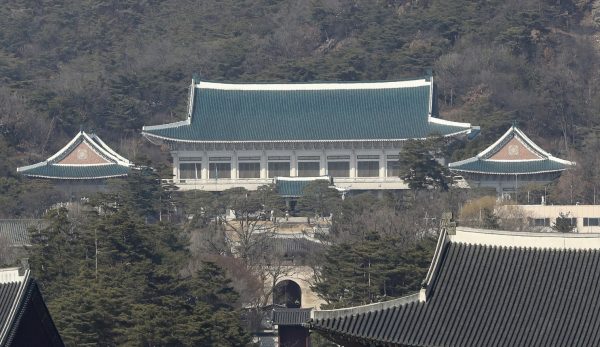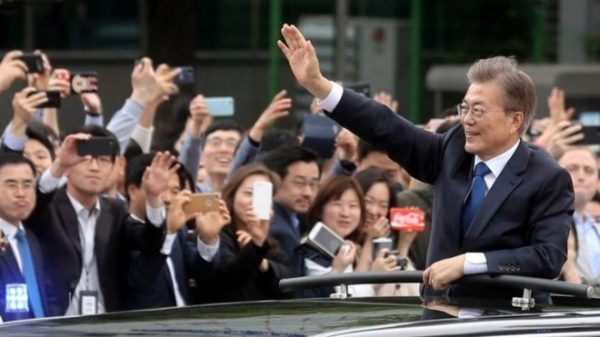

“After preparations are finished, I will step out of the Blue House and open the era of the Gwanghwamun president,” Moon said in his speech, without offering a specific timeline. “I will be a president willing to communicate with people at any time. The president will directly brief the media on important issues. I will stop by the market after leaving work so I can talk candidly with citizens. I will sometimes hold large debate events at Gwanghwamun Square.”
Moon’s plans to abandon precedent, and, partially, the Blue House, are part of an attempt to be a more down-to-earth president. In other words, the opposite of what critics saw in Park’s presidency.
Park was described by many as aloof and autocratic, and was notorious for refusing to take questions during the few news conferences she allowed.
So his new approach was clear when Moon personally introduced his nominees for prime minster, spy chief and presidential chief of staff at a news conference Wednesday at the Blue House and his nominees answered questions.
Park’s life was strongly linked to the huge palace. She lived in the Blue House twice, first as the daughter of military strongman Park Chung-hee, who moved into the palace in 1963, two years after he staged a coup and took control of the country.
Park left the Blue House following the assassination of her father in 1979. But, following a meteoric political career, she returned after winning the presidency in December 2012, thanks to overwhelming support from older voters who remembered her father as a hero who rescued the nation from poverty, despite his brutal record of civilian oppression.
When massive protests against her mounted starting late last year, she retreated to the Blue House, rarely appearing in public.
Moon expects to find a much smaller presidential residence near Gwanghwamun. But he won’t entirely abandon the Blue House. Officials from his presidential camp have told reporters that Moon will continue to use the Blue House’s underground rooms for important national security meetings. He will also continue to use the Blue House’s helicopter pad and also the Yeongbingwan Hall to greet foreign guests, they said.
But Moon plans to open the rest of the Blue House space to the public and convert the remaining buildings into museums or other facilities to draw tourists.
Park’s saga has raised debate on whether South Korea gives too much unchecked power to the president. Following Park’s ouster, some politicians argued for constitutional changes to curb presidential powers. Among the ideas were to let the prime minister handle domestic affairs or strengthen the autonomy of regional governments. These discussions will likely be revisited during Moon’s presidency.
“I will share the president’s imperial powers as much as I can,” Moon said in the speech. “I will make a system that can prevent any government agency from wielding unchecked power.”
WP/AP

Leave a Reply
You must be logged in to post a comment.